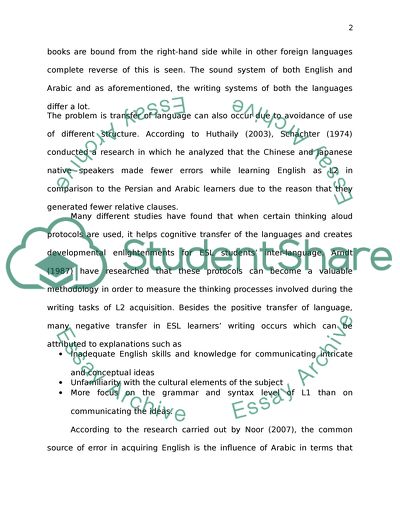Cite this document
(“An Investigation of Ll-L2 Transfer among Saudis: the influence of Research Proposal”, n.d.)
An Investigation of Ll-L2 Transfer among Saudis: the influence of Research Proposal. Retrieved from https://studentshare.org/miscellaneous/1554944-an-investigation-of-ll-l2-transfer-among-saudis-the-influence-of-prior-composition-instruction-in-the-l1
An Investigation of Ll-L2 Transfer among Saudis: the influence of Research Proposal. Retrieved from https://studentshare.org/miscellaneous/1554944-an-investigation-of-ll-l2-transfer-among-saudis-the-influence-of-prior-composition-instruction-in-the-l1
(An Investigation of Ll-L2 Transfer Among Saudis: The Influence of Research Proposal)
An Investigation of Ll-L2 Transfer Among Saudis: The Influence of Research Proposal. https://studentshare.org/miscellaneous/1554944-an-investigation-of-ll-l2-transfer-among-saudis-the-influence-of-prior-composition-instruction-in-the-l1.
An Investigation of Ll-L2 Transfer Among Saudis: The Influence of Research Proposal. https://studentshare.org/miscellaneous/1554944-an-investigation-of-ll-l2-transfer-among-saudis-the-influence-of-prior-composition-instruction-in-the-l1.
“An Investigation of Ll-L2 Transfer Among Saudis: The Influence of Research Proposal”, n.d. https://studentshare.org/miscellaneous/1554944-an-investigation-of-ll-l2-transfer-among-saudis-the-influence-of-prior-composition-instruction-in-the-l1.


